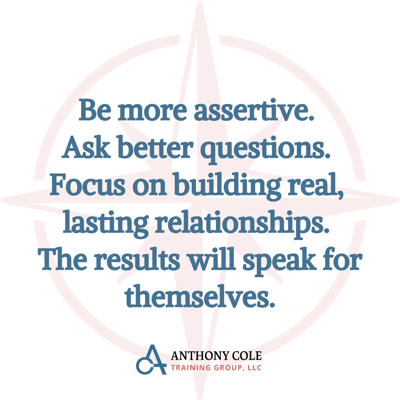Sales Prospecting Tips for the Coach: The Reality of Prospecting
Here’s a sales prospecting tip for the coach: prospecting is not always fun. If you are a manager, you should not tell your people to “just pick up the phone and have fun with it.” They will know you don’t know what you’re talking about.
Fun is water skiing, snow skiing, swimming, hiking, going to a play or the opera, having a picnic, watching a ballgame, attending a family reunion, singing, playing guitar, enjoying an online or Xbox game, falling in love, dancing, going on a cruise, eating an amazing meal, getting a promotion, a raise, or recognition for a job well done. Those are fun activities!
Facing rejection, not talking to anyone, having people hang up or unsubscribe, being told not to call again, or having people lie or avoid you—those are not fun. Many prospects won’t return calls or emails and will say whatever it takes to get rid of a salesperson. Salespeople must also deal with people asking for free information or canceling appointments at the last minute. These are not fun activities.
Sales Prospecting Tips for the Coach: Teaching Resilience
If prospecting isn’t fun, then what is it? Here’s another sales prospecting tip for the coach: you must tell your team this:“You don’t have to like it; you just have to do it.” It’s called work for a reason.
Salespeople have to put a lot of preparation, thought, intellect, and skill into being successful at prospecting. Our sales evaluation partner, Objective Management Group, has found that the single biggest contributor to sales success is the ability to be rejection-proof. Even with skill, technique, scripts, and preparation, if salespeople can’t handle rejection and the emotional roller coaster of prospecting, they’ll struggle and fail more often than they succeed.
Rejection-proof salespeople recover quickly from setbacks. They get back on the phone immediately, learn from mistakes, and keep going.
Additional Sales Prospecting Tips for the Coach
-
Hire hunters. Use a sales-specific evaluation to ensure you’re bringing in the right people.
-
Provide leads, even if you charge for them. Stop trying to make non-hunters into hunters.
-
Inspect what you expect. Hold your team accountable for consistent prospecting activity.
-
Offer training and coaching to help them prospect effectively in today’s environment.
-
Role-play phone calls and first meetings in every sales meeting to keep skills sharp.
-
Equip them with prospecting strategies and tools that help them stand out from competitors.
If your salespeople have a solid phone approach and don’t sound like everyone else, they’ll have a chance. Help them uncover the root causes of their prospecting challenges, like beliefs or need for approval, and then coach them through it. With practice and preparation, their phone conversations can become as natural as breathing.
The bottom line: sales prospecting isn’t about having fun, it’s about getting the job done so that salespeople have solid appointments that lead to real opportunities and closed business. That’s where the fun begins.
Don't Miss our Free Webinar THIS MONDAY! Register HERE
FAQ: Sales Prospecting Tips for the Coach
Q: What is the best sales prospecting tip for a sales coach?
A: Teach your team that prospecting isn’t about enjoyment—it’s about discipline. Consistency, accountability, and resilience are key.
Q: How can a coach help salespeople overcome rejection?
A: Encourage quick recovery after rejection and role-play real scenarios during team meetings. Building emotional toughness is essential.
Q: What should a sales manager focus on during coaching sessions?
A: Focus on helping your team develop strong prospecting habits, use targeted messaging, and stay accountable for daily outreach goals.
Q: Can prospecting ever be fun?
A: It can be, once your team sees results. Success in booking quality appointments and closing deals turns the hard work into something enjoyable.

.jpeg?width=2200&height=683&name=Future%20Leaders%20(1600%20x%20900%20px).jpeg)

-2.png?width=400&height=400&name=free%20download%20(1000%20x%201000%20px)-2.png)



